How much trouble can a bored preschooler get into while you are trying to help your older children with their lessons? Don’t answer that. Instead, let’s just focus on providing your preschooler with some fun activities as his own version of “schoolwork.”
Preschoolers can begin to learn school-time skills with a few simple projects of their own. Try some of these activities by setting up your preschooler with his own individual work area, just as though he were another “real” student, but your space allowances will determine whether your preschooler is seated near his siblings or in his own special location with plenty of elbow room. If it is possible to group your children together in the same area, your preschooler can begin to observe how his siblings sit and work independently, so that he can learn to duplicate their actions. Not every preschooler will be eager to sit still and “play” school for long periods, but for those who are determined to mimic their older siblings, these suggestions offer safe, semi-supervised activities that will develop essential skills. Activities can be changed periodically, just as your older students change subjects throughout the day. These projects can work to lengthen a short attention span, as well as keep your little one occupied in fascinating, educational activities while you explain a lesson concept or demonstrate a few math problems to your older students.
You will probably need to work back and forth, setting up the preschooler with his activity, then starting the older children on their lessons, checking back on the preschooler, following up with the olders, and repeating the cycle as often as needed. Yes, at first you will feel as busy as the old-time plate juggler who balanced spinning plates on tall sticks placed around a table, running and spinning and running and spinning and running to catch the far one just before it falls, but your diligence will quickly pay off with rewards of students who can work independently for a few minutes until Mom is available for help.
The following is a list of materials and activities to help keep your preschooler occupied and give him a boost in the learning department, beyond the usual board books and wooden puzzles. Whether these activities look educational or not, they do include getting-ready-for-learning skills, often disguised as creative fun. Reserving these materials (especially the scissors and glue sticks) and activities for use only during school-time or at the school table will help reinforce the idea of schoolwork in your preschooler’s mind and help him become accustomed to your family’s homeschooling routine. If the “fun” activities can only be done during school, it helps to plant the idea that learning is fun — plus it keeps those activities from becoming boring. Many other activities and playthings also have educational benefits, so please extend this list with your own activities and variations to fit your child’s interests and skill level. Be sure to swap ideas with your friends, no matter what the ages of the children, because ideas can be adapted to suit any age level.
“Sample” Notebooks
Materials: an assortment of old magazines, newspapers, greeting cards, sales ads, junk mail, etc.; spiral notebooks and glue stick, or magnetic photo album/pages. Store these in a specific box for the preschooler’s use, to prevent him from cutting up your newest magazines, unpaid bills, and expensive set of leather-bound first edition books.
Method:Let your child find and cut out pictures, letters, or numbers that fit certain criteria:
- Objects matching a specific color (use basic colors to allow for variations in shading);
- Objects starting with a certain letter of the alphabet;
- Letters and/or numbers in a variety of fonts/typefaces.
Use each of the above groups to create individual “sample” notebooks, making 1-2 pages for each category: color recognition (separate pages for red, yellow, etc), letter-symbol recognition (separate pages for a/A, b/B, etc), letter-sound recognition (separate pages for things that begin with “a,” “b,” etc), number-symbol recognition (separate pages for each numeral, 0-9 or higher, if desired), number-value recognition (groups of 2 items for “2’s,” groups of 3 items for “3’s,” etc.), etc. (Recognition of the letter or number symbols is important because the variations in fonts and typefaces can be quite confusing to beginning readers.)
Keep the child busy looking and searching on his own for the needed samples and let him do the cutting, so that this activity lasts more than a few seconds. Samples can be glued into an old spiral notebook with a glue-stick or put into an old photo album or 3-ring binder with “magnetic” photo pages for minimal mess. The notebooks can also be “studied” for help in recognizing colors, letters, etc. Occasional supervision may be necessary to help the beginner understand the placement of the samples. A younger child may just enjoy cutting/gluing random pictures into a notebook without any specific categories. Pictures can also be arranged so as to tell a wordless story: This little girl went to this house to visit her grandmother…
Skills Developed: visual recognition, cutting with scissors, glue-stick, fine motor skills
Mess Alert: paper scraps from cutting; glue-stick residue
Tangram Pictures & Patterns
Materials: felt pieces, flat craft foam shapes, colored paper or card stock pieces (cut into circles, squares, rectangles, triangles, parallelograms, etc.)
Method: free play; challenge student to duplicate patterns; challenge student to keep enlarging designs
Skills Developed: eye/hand coordination, fine motor skills, pattern recognition
Mess Alert: pieces to pick up (Store the pieces in a box large enough that your child can easily return the pieces himself at clean-up time)
Stringing Beads
Materials: wooden, plastic, or craft foam beads; empty thread spools; leather boot laces, shoestrings, or plastic laces
Method: Tip of shoelaces can be stiffened by wrapping with masking tape to form a child-safe “needle” about 3″ long. Free play, or challenge student to duplicate patterns.
Skills Developed: eye/hand coordination, fine motor skills, pattern recognition
Mess Alert: pieces to pick up (Store the pieces in a box large enough that your child can easily return the pieces himself at clean-up time)
Sewing/Lacing Cards
Materials: cardboard or poster board shapes with holes punched close to the edges; plastic canvas; yarn, heavy string, shoelaces, or plastic laces
Method: Sew through the holes to outline the shape or loop around the edges. (See above for creating a safe “needle” with masking tape) Plastic canvas can be “stitched” randomly or into any pattern desired; it can be cut into shapes or used as squares or rectangles (circles can also be found in most craft stores). Blunt yarn needles (metal or plastic) can also be found in craft stores, if desired.
Skills Developed: eye/hand coordination, fine motor skills
Mess Alert: strings to pick up (Store the pieces in a box large enough that your child can easily return the pieces himself at clean-up time)
Building Blocks
Materials: Cuisenaire rods, building blocks, etc. (may be interlocking or non-interlocking)
Method: free play; building/stacking; pattern matching (include paper patterns to reproduce with blocks); counting, matching, & sorting. Simple patterns may be drawn as a guide for the child to reproduce over and over: red/red/blue or square/rectangle/triangle, etc.
Skills Developed: eye/hand coordination, fine motor skills, pattern recognition, basic math awareness
Mess Alert: pieces to pick up (Store the pieces in a box large enough that your child can easily return the pieces himself at clean-up time)
Buttons
Materials: jar or box of assorted clothing buttons
Method: free play; sorting, matching, & counting
Skills Developed: eye/hand coordination, fine motor skills, basic math awarenes
Mess Alert: pieces to pick up (Store the pieces in a box large enough that your child can easily return the pieces himself at clean-up time)
Wikki Stix
Materials: Wikki Stix (like chenille sticks, but made of wax)
Method: free play; pattern duplication; shaping into letters or numbers
Wikki Stix may be stuck to windows, table tops, paper, or stuck to each other for 3-D creations.
Skills Developed: eye/hand coordination, fine motor skills, pattern recognition, creativity
Mess Alert: may leave slight waxy residue on surfaces, depending on brand used
Cutting Practice
Materials: child-safe scissors, construction paper or newspapers (Again, have a designated supply of papers for the child to use, avoiding accidental cutting of valuable materials.)
Method: Let child practice cutting photos or ads from newspapers, cutting along lines, etc.
Let child practice cutting by reducing construction paper to bits! Leftover scraps of paper, torn sheets, or less-pretty colors may be used up in this manner, giving valuable practice in scissor skills.
Skills Developed: eye/hand coordination, fine motor skills, cutting with scissors
Mess Alert: paper scraps
Handwriting Practice
Materials: newspapers, junk mail (Again, have a designated supply of papers for the child to use, avoiding accidental drawing on valuable materials.)
Method: Let child practice handwriting by tracing lines inside the thick lines of headlines and large font letters and numbers. The child may also like to copy letters or entire words onto blank sheets of paper or wide-lined paper.
Skills Developed: eye/hand coordination, fine motor skills, pre-handwriting basics
Mess Alert: paper scraps; marks from pencils or other writing implements
Activity Jar
Materials: Activity Jar full of assorted items
Method: (see this article for details)
Skills Developed: sorting, matching, counting, fine motor skills
Mess Alert: pieces to pick up (children can easily help toss pieces back into the large container). Pieces may be poured out onto a cookie sheet or cake pan to minimize scattering.
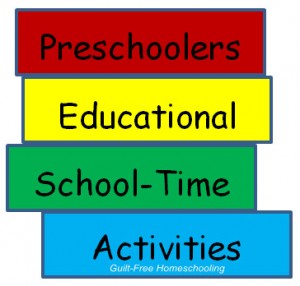

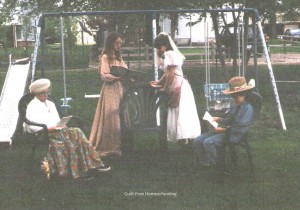
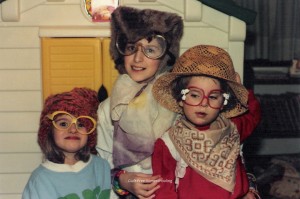

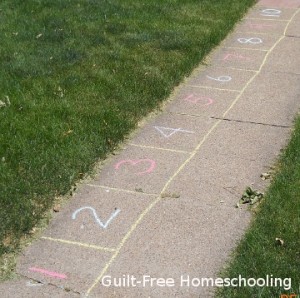
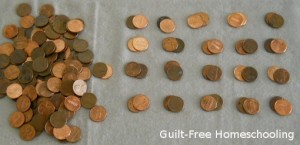
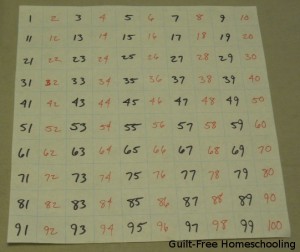

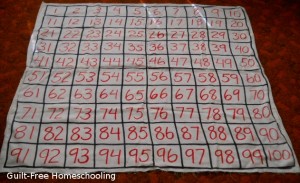

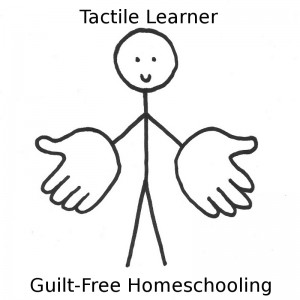
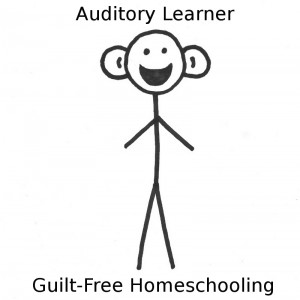
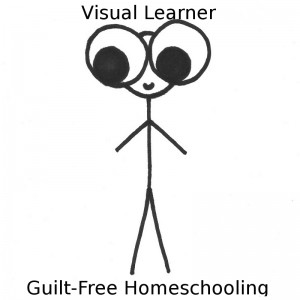



 Guilt-Free Homeschooling is the creation of Carolyn Morrison and her daughter, Jennifer Leonhard. After serious disappointments with public school, Carolyn spent the next 11 years homeschooling her two children, from elementary to high school graduation and college admission. Refusing to force new homeschooling families to re-invent the wheel, Carolyn and Jennifer now share their encouragement, support, tips, and tricks, filling their blog with "all the answers we were looking for as a new-to-homeschooling family" and making this website a valuable resource for parents, not just a daily journal. Guilt-Free Homeschooling -- Equipping Parents for Homeschooling Success!
Guilt-Free Homeschooling is the creation of Carolyn Morrison and her daughter, Jennifer Leonhard. After serious disappointments with public school, Carolyn spent the next 11 years homeschooling her two children, from elementary to high school graduation and college admission. Refusing to force new homeschooling families to re-invent the wheel, Carolyn and Jennifer now share their encouragement, support, tips, and tricks, filling their blog with "all the answers we were looking for as a new-to-homeschooling family" and making this website a valuable resource for parents, not just a daily journal. Guilt-Free Homeschooling -- Equipping Parents for Homeschooling Success!

Recent Comments